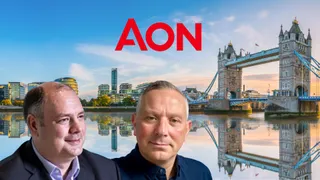UK Non-Life Results show impact of different underwriting risk strategies on Solvency II
UK non-life insurance results highlight the significant impact that different investment and underwriting risk strategies have on Solvency II (SII) capital ratios, according to Fitch Ratings. The varying impact of SII on Esure, Admiral and Direct Line reflects differences in business diversification, investment and risk transfer strategies, said the firm. Esure reported an SII coverage ratio of 123 percent for end-2015, at the lower end of the peer group. Admiral's SII coverage was 206 percent and Direct Line's was 147 percent. All three use the standard formula for calculating these ratios. Fitch said it believe that Esure's lower capital coverage ratio is driven by its less diversified business risk profile and the greater credit risk in its investment portfolio. It was hit the most out of the peer group by SII requirements; its Solvency I ratio was 390 percent. Esure's business is concentrated in UK motor, with 83 percent of its premiums focused in this area. On the investments side, approximately 10 percent of the fixed income portfolio is invested in non-investment grade bonds, higher than its peers. The high-yield bonds attract a high capital charge under SII, even though the group took actions in 2015 to reduce certain RMBS exposures that also attract higher capital charges under the new regime, according to Fitch. In contrast, Admiral has a conservative investment strategy with most invested assets allocated to short-term fixed income instruments, money market funds and cash and cash-equivalents. Credit quality of the fixed income portfolio is good with over 90 percent of instruments rated 'A-' or above. Admiral's substantial use of co-insurance and reinsurance to transfer risks and obtain capital relief also helps them to achieve a higher SII ratio. The group's business is also concentrated in UK motor, but only 25 percent is retained because Admiral has a 40% co-insurance agreement with Munich Re as well as quota share reinsurance agreements in place with major international reinsurance groups. Direct Line has a more diversified business profile with motor, home, commercial and rescue products. Motor insurance accounts for 45 percent of gross written premiums. The diversification of its business likely reduced the capital hit from SII. Direct Line's riskier asset investments, which include high yield debt (4.8 percent of the fixed income portfolio), infrastructure and property, attract higher capital charges under SII. Fitch's Prism model is risk adjusted and takes into account business diversification benefits and credit risks of invested assets, similar to SII. We expect these insurers' SII coverage ratios to be relatively stable on the underwriting side, but Esure's and Direct Line's ratios could be exposed to greater volatility from their higher risk investments including high yield bonds, equities and infrastructure. The move to using the internal models approach instead of the standard formula by Direct Line and Admiral, which they target for 2016/17, may reduce their SII capital requirements and better reflect the risk in their business models, according to Fitch. Esure is also considering the move to an internal model in the future.
Already registered?
Login to your account
If you don't have a login or your access has expired, you will need to purchase a subscription to gain access to this article, including all our online content.
For more information on individual annual subscriptions for full paid access and corporate subscription options please contact us.
To request a FREE 2-week trial subscription, please signup.
NOTE - this can take up to 48hrs to be approved.
For multi-user price options, or to check if your company has an existing subscription that we can add you to for FREE, please email Elliot Field at efield@newtonmedia.co.uk or Adrian Tapping at atapping@newtonmedia.co.uk
Editor's picks
Editor's picks
More articles
Copyright © intelligentinsurer.com 2024 | Headless Content Management with Blaze

